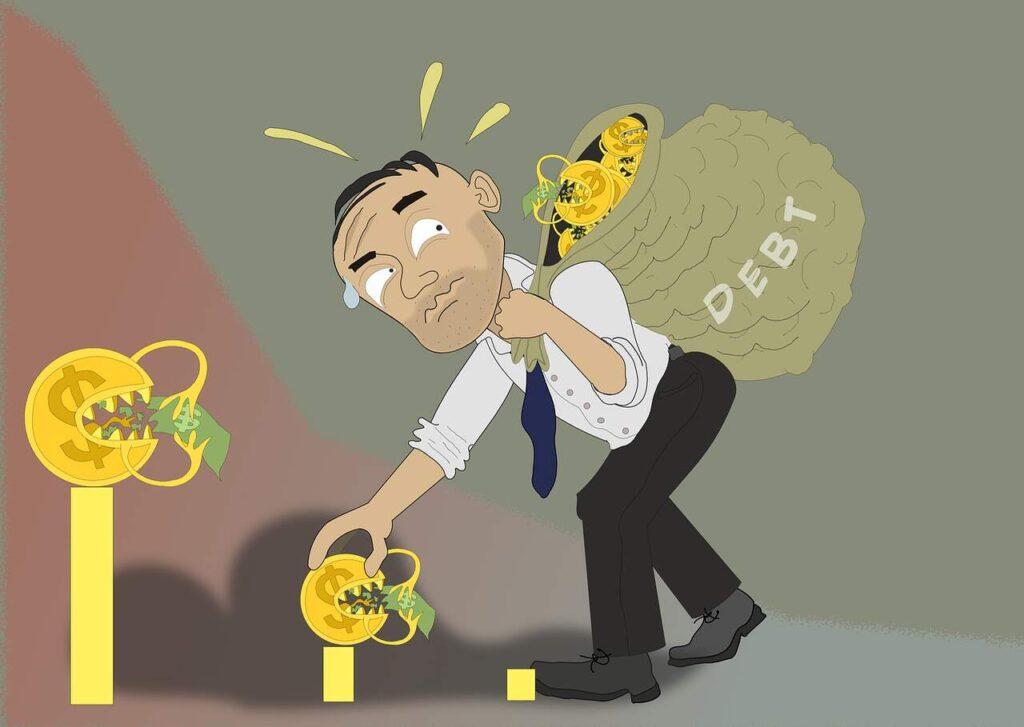5 Economic Problems of Pakistan and Their Shocking Impacts
Pakistan, a nation abundant in both natural and human resources, has encountered ongoing economic difficulties. The economic problems of Pakistan have impeded its progress and limited its capacity to attain sustainable growth. Among the various issues, five prominent ones serve as major obstacles: elevated inflation rates, increasing debt load, trade imbalance, energy shortage, and unemployment along with poverty. This article presents an in-depth examination of these vital economic challenges and their repercussions for Pakistan’s future.
Table of Contents
1. Elevated Inflation Rates

One of the biggest economic problems of Pakistan is the continued high level of inflation. Inflation in Pakistan frequently rises due to multiple factors, including budget mismanagement, dependence on imports, and political turmoil. Over time, inflation has diminished the purchasing power of average citizens, disproportionately impacting low and middle-income families.
The costs of essential items like wheat, sugar, and fuel have skyrocketed, often resulting in public dissatisfaction. Structural vulnerabilities in the economy, such as low agricultural productivity and excessive reliance on imports for food and energy, worsen inflationary trends. Furthermore, the depreciation of the Pakistani rupee raises import costs, which exacerbates inflation.

Businesses are also affected by high inflation. Rising production expenses lead to decreased profitability, which discourages investment and expansion. For the average citizen, inflation translates to dwindling savings and restricted access to basic goods. The failure to control inflation has perpetuated a cycle of poverty and social unrest, necessitating immediate policy action and economic reforms to resolve the phenomenon of economic problems of Pakistan.
2. Increasing Debt Load

One of the second largest economic problems of Pakistan is that Pakistan’s debt has escalated into a considerable issue, with both external and domestic debt reaching critical levels. The nation heavily depends on loans from international entities such as the International Monetary Fund (IMF), and World Bank, and bilateral lenders like China and Saudi Arabia. These loans are typically utilized to cover fiscal gaps instead of being invested in productive economic sectors.
Debt repayment takes a substantial portion of Pakistan’s annual budget, leaving limited resources for developmental initiatives in health, education, and infrastructure. This dependence on borrowing also compromises Pakistan’s economic autonomy, as lenders impose strict conditions that generally clash with national objectives.
The rising debt burden is a result of ineffective revenue generation systems. Pakistan’s tax-to-GDP ratio is among the lowest worldwide, largely attributed to poor tax collection and a limited tax base. Instead of tackling these structural challenges, the government continues borrowing, compounding the debt crisis. There are many economic problems of Pakistan, but they are severe.
Tackling the debt dilemma necessitates both immediate and long-term approaches. Short-term solutions could involve restructuring loans and negotiating more favorable terms with creditors. Long-term strategies should focus on broadening the tax base, cutting down non-developmental spending, and encouraging economic growth to lessen reliance on foreign funding.
3. Trade Imbalance

Pakistan is persistently grappling with a trade deficit, characterized by imports consistently surpassing exports. This is the third major economic problem of Pakistan. This disparity of trade imbalance places significant pressure on the country’s foreign exchange reserves and obstructs economic stability. The key factors contributing to Pakistan’s trade deficit include a limited export base, low-value production, and a high dependency on imports for essential items like machinery, petroleum, and food.
Pakistan’s exports primarily consist of agricultural products and textiles. However, these sectors encounter issues such as outdated technology, insufficient innovation, and inadequate government support. Moreover, increased global competition from countries like Bangladesh, India, and Vietnam has diminished Pakistan’s market share in the international arena.
Conversely, the cost of imports is inflated by the consumption of luxury goods and energy products. The absence of a comprehensive industrial policy has hindered local manufacturing, making the nation overly reliant on foreign goods.
To mitigate the trade deficit, Pakistan needs to diversify its export offerings by targeting high-value sectors such as information technology, pharmaceuticals, and engineering products. Strengthening trade relationships with regional and international partners, as well as investing in export-driven industries, is crucial for addressing the trade imbalance.
4. Energy Crisis

The energy sector plays a vital role in driving economic growth, yet Pakistan has faced a lingering energy crisis for many years. Regular power outages, commonly referred to as load-shedding, hinder industrial production, diminish agricultural output and cause inconveniences for households. This is one of the fourth major economic problems of Pakistan.
The underlying reasons for the energy crisis include outdated infrastructure, excessive dependence on imported fuels, and poor management of energy resources. A considerable amount of electricity produced in Pakistan relies on costly imported oil, leading to unsustainable energy costs for consumers and businesses.
Moreover, circular debt within the energy sector—where energy producers do not receive payments from distributors, resulting in a financial impasse—intensifies the issue. This inefficiency discourages investment in the energy sector, hindering the growth of renewable energy options like wind, solar, and hydropower. This is a severe issue and falls in the category of economic problems of Pakistan.
To address the energy crisis, Pakistan needs a comprehensive strategy. This should involve investing in renewable energy, modernizing the power grid, and tackling the circular debt situation through improved financial management. A sustainable energy policy is essential for guaranteeing long-term economic stability and growth. These steps are necessary to tackle the economic problems of Pakistan.
5. Unemployment and Poverty

Unemployment and poverty remain closely linked challenges in Pakistan, impacting millions of individuals. This is one of the fifth largest economic problems of Pakistan. The official unemployment figures often fail to capture the true level of joblessness, as many people are underemployed or working in informal, low-wage positions.
Various factors contribute to the high unemployment rates in Pakistan, including a lack of industrial diversification, low literacy levels, and insufficient vocational training. Rapid population growth has further worsened the situation as the economy struggles to create enough jobs to accommodate the expanding labor force.

Poverty, which is closely associated with unemployment, affects nearly one-third of Pakistan’s population. Rural regions are especially vulnerable, with minimal access to education, healthcare, and infrastructure perpetuating poverty cycles. Urban areas, although more developed, face their own difficulties, such as slum conditions and increasing living expenses.
To tackle unemployment and poverty, Pakistan must prioritize job creation in high-potential sectors such as agriculture, technology, and manufacturing. Investing in education and skill development programs is vital for preparing the labor force with the necessary tools for a modern economy. Social safety nets and targeted poverty alleviation initiatives can also assist in uplifting the most vulnerable members of society. These steps will have to be adopted to resolve the economic problems of Pakistan
Conclusion
The economic problems of Pakistan being faced by the economy of Pakistan are intricately linked, necessitating comprehensive and coordinated responses. High inflation, increasing debt, a persistent trade deficit, an ongoing energy crisis, and widespread unemployment and poverty collectively obstruct the nation’s progress. Overcoming these challenges will require bold reforms, effective governance, and long-term strategic planning.
Key policy actions should focus on enhancing revenue generation, reducing dependency on imports, diversifying the export base, and investing in human capital if the economic problems of Pakistan have to be resolved. Furthermore, promoting political stability and curbing corruption are crucial for establishing an environment that supports economic growth. By directly addressing these issues, Pakistan can harness its potential and create a pathway towards a more prosperous and sustainable future.
So serious and vibrant steps will have to be taken to resolve the economic problems of Pakistan and to bring the economy of Pakistan on track.







